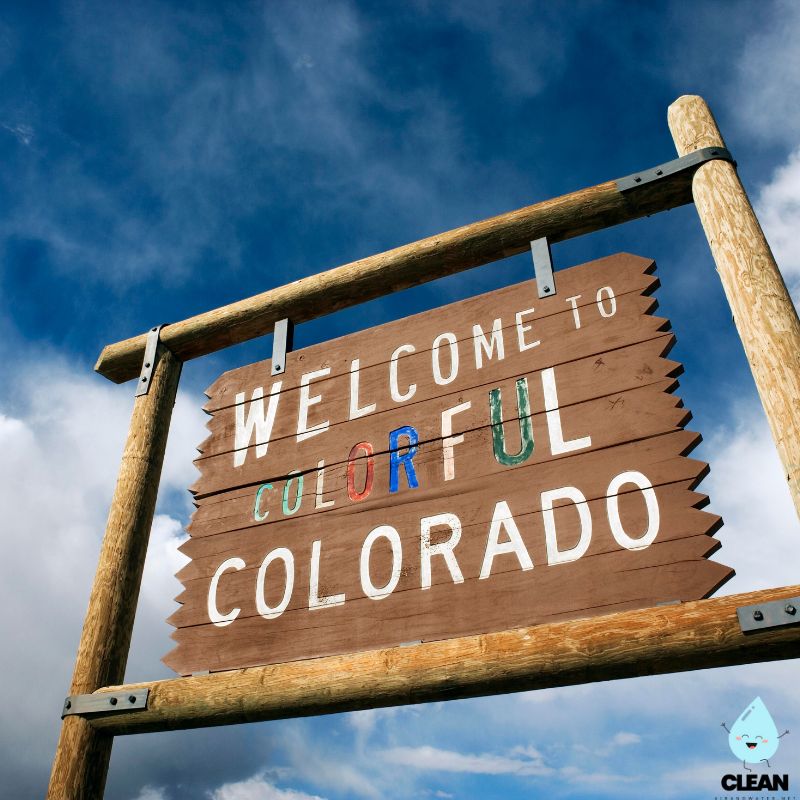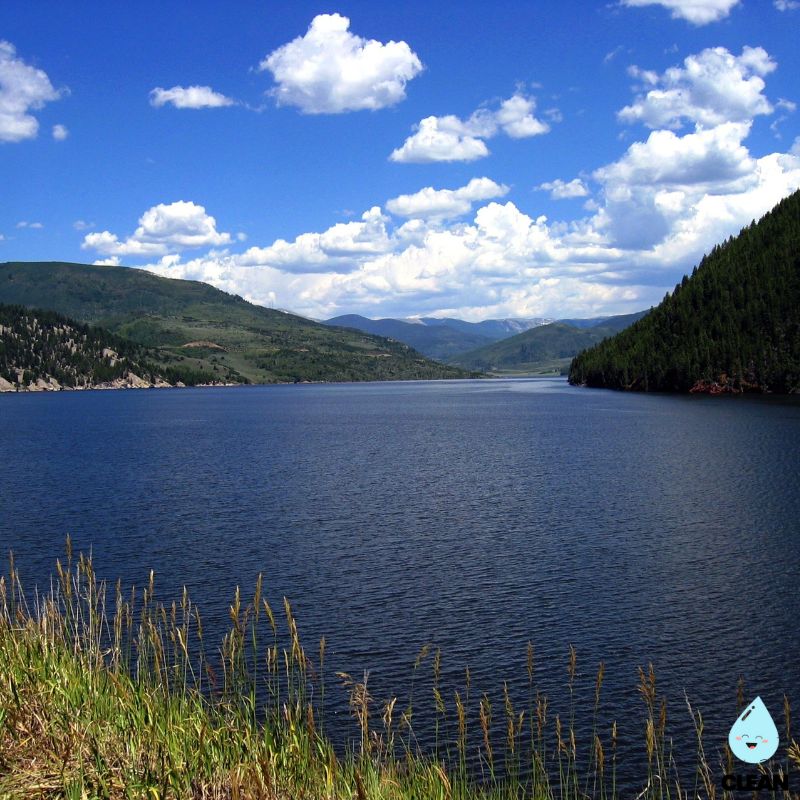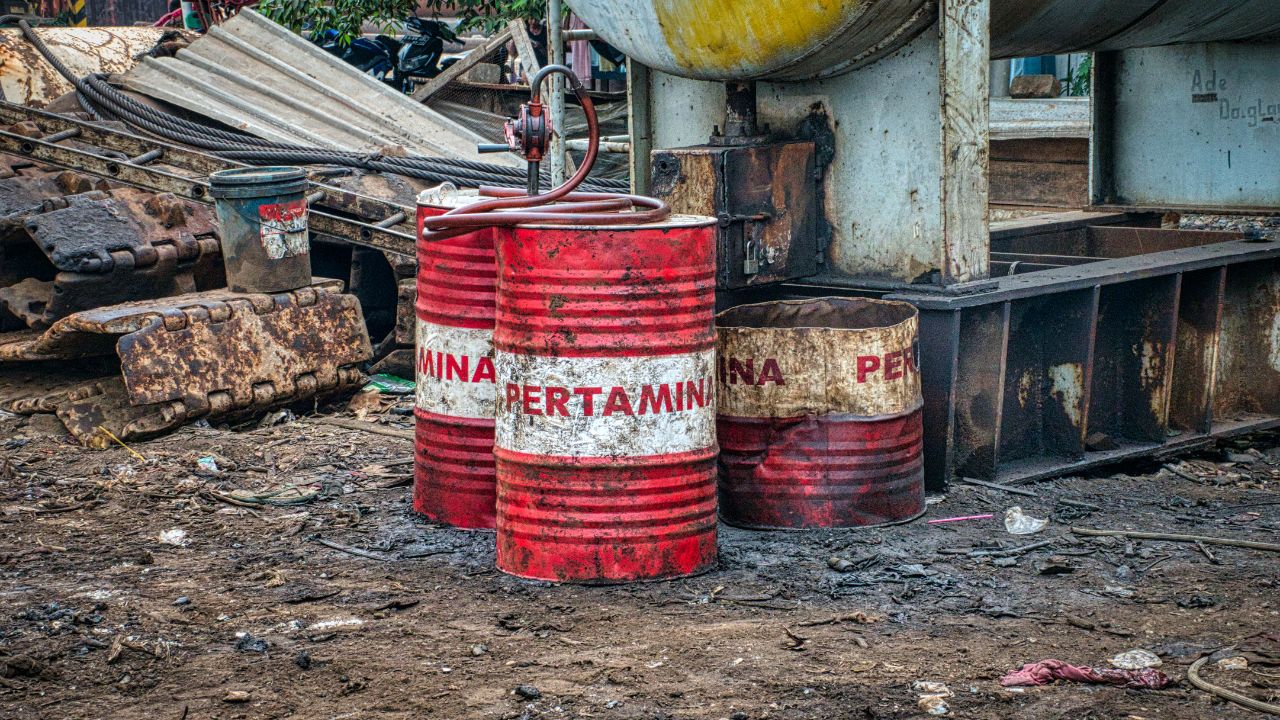Colorado Water Quality at a Glance
moderate concerns
Is Colorado Water Safe to Drink?
Generally Yes, With Monitoring – Most Colorado water systems meet federal standards, but the state has 29 systems exceeding new PFAS limits serving nearly 268,000 residents. Additional concerns include chromium-6 and disinfection byproducts in major cities like Denver and Colorado Springs. Colorado has proactive voluntary PFAS testing programs and strong state oversight.
⚠️ Key Concerns for Colorado Residents
- PFAS “Forever Chemicals”: 29 of 2000+ public water systems exceed new federal limits
- Geographic Impact: Contamination sources include Peterson Air Force Base near Colorado Springs and industrial sites
- Chromium-6: Detected above health guidelines in Denver (37.8 ppt) and Colorado Springs water systems
- Disinfection Byproducts: Chloroform and other cancer-linked compounds from water treatment processes
Read the full report below for detailed analysis, city-specific data, and actionable recommendations for Colorado residents.
Colorado – The Centennial State – Water Quality Report 2025: PFAS Testing, Infrastructure Concerns & Safety across your state
Colorado’s water infrastructure serves approximately 5.8 million residents across diverse geographical regions, from the high peaks of the Rocky Mountains to the eastern plains. The state operates through a complex network of over 2,000 public water systems, ranging from large municipal utilities like Denver Water, which serves 1.5 million customers, to smaller rural systems providing essential services to mountain communities. Colorado’s water sources include the Colorado River Basin, South Platte River, Arkansas River, and Rio Grande systems, along with numerous mountain reservoirs and groundwater aquifers that supply both urban centers and agricultural areas.
Despite abundant mountain snowpack, Colorado faces significant water infrastructure challenges. According to the American Society of Civil Engineers’ 2025 Infrastructure Report Card, Colorado’s drinking water infrastructure faces aging systems with treatment facilities and pipes averaging 50 years old, growing population demands, and emerging contaminant concerns including PFAS “forever chemicals.” The state has received substantial federal infrastructure investments through the Infrastructure Investment and Jobs Act to address these challenges, focusing on drinking water safety, PFAS treatment, and system modernization. Colorado’s commitment to water quality improvement is demonstrated through partnerships between the Colorado Department of Public Health and Environment (CDPHE), local utilities, and federal agencies working to ensure safe, reliable water access for all residents while addressing the unique challenges of mountain geography and climate change impacts.

Colorado Water Quality: Current Status (2024-2025)
Statewide Compliance and Testing
- Overall Compliance: The majority of Colorado’s 2,000+ public water systems meet federal Safe Drinking Water Act standards, though approximately 29 systems have documented PFAS contamination levels above new EPA limits serving nearly 268,000 residents.
- PFAS Monitoring: Colorado launched a voluntary PFAS testing program in 2020, with about two-thirds of the state’s water utilities participating. The state has been proactive in identifying contamination sources and implementing treatment solutions.
- Infrastructure Investment: Colorado has received significant federal funding through the Infrastructure Investment and Jobs Act for water infrastructure improvements, with EPA estimates showing $4.69 billion needed over 20 years for wastewater infrastructure alone.
Major Water Sources and Challenges
- Colorado River Basin: Serves western Colorado and the Denver metro area through trans-mountain diversions, with documented PFAS contamination in some watersheds requiring ongoing monitoring and treatment upgrades.
- South Platte River System: Primary source for Front Range communities including Denver, facing challenges from both natural contaminants and emerging chemicals requiring advanced treatment technologies.
- Mountain Communities: Remote systems face unique challenges with aging infrastructure, high costs for compliance with new regulations, and limited technical capacity for complex treatment technologies.
Emerging Contaminant Response
- PFAS Regulation Implementation: New EPA drinking water standards for PFOA and PFOS (4 parts per trillion) take effect in 2029, requiring significant infrastructure investments from affected water systems across the state.
- Treatment Technology Deployment: Water utilities are implementing advanced treatment technologies including granular activated carbon filtration and reverse osmosis systems to remove PFAS and other emerging contaminants.
- Source Identification and Cleanup: Colorado has traced PFAS contamination to fire training centers, airports, and industrial sites including Peterson Air Force Base near Colorado Springs, with the state implementing comprehensive response strategies.
Rural and Mountain Communities
- Infrastructure Disparities: Rural water systems face disproportionate challenges with aging infrastructure, limited technical capacity, and higher per-capita costs for compliance with new regulations.
- Climate Change Impacts: Mountain snowpack variability and earlier melting affect water storage and supply reliability, requiring adaptive management strategies and infrastructure improvements.
- Technical Assistance Programs: CDPHE and federal agencies provide enhanced technical support to help smaller systems navigate complex regulatory requirements and secure funding for necessary improvements.
Looking Forward: 2025-2030
Colorado’s water quality landscape is undergoing significant transformation as utilities prepare for new federal PFAS regulations taking effect in 2029. The state’s proactive approach to PFAS monitoring, innovative green infrastructure pilot projects, and substantial federal infrastructure investments position Colorado as a leader in addressing emerging water quality challenges. The 2023 Colorado Water Plan projects a statewide supply gap of up to 740,000 acre-feet by 2050, with municipal and industrial demands potentially short 230,000 to 740,000 acre-feet in dry years. Successful implementation will require continued collaboration between state regulators, water utilities, and communities to ensure that all Coloradans have access to safe, affordable drinking water while addressing the challenges of population growth, climate variability, and aging infrastructure.
Recommendations for Colorado Residents

Know Your Water Source
Contact your water utility to request annual water quality reports and ask about PFAS testing results. Visit CDPHE’s website to access your local system’s testing data and understand any contaminants of concern in your area, including lead and copper monitoring results.

Support Infrastructure Investment
Stay informed about local water infrastructure needs and support utility rate structures that enable necessary improvements. Attend public meetings when utilities discuss infrastructure upgrades, PFAS treatment investments, and pipe replacement programs.

Consider PFAS-Certified Filtration
For areas with known PFAS contamination, consider NSF-certified activated carbon or reverse osmosis filters specifically tested for PFAS removal. These can provide additional protection while utilities implement treatment upgrades.

Report Water Quality Concerns
Contact your local water utility immediately for taste, odor, or color concerns. Report suspected contamination to CDPHE’s Water Quality Control Division at (303) 692-3500 for investigation and follow-up.

Practice Water Conservation
Support Colorado’s water sustainability by implementing conservation measures like efficient irrigation, xeriscaping, and low-flow fixtures. Reducing demand helps utilities maintain system reliability and affordability while protecting mountain water sources.
Colorado Cities We Cover
Denver Water Quality
Comprehensive analysis of Denver Water, Colorado’s largest water utility serving 1.5 million customers. Includes information on water sources, treatment processes, infrastructure modernization, and PFAS monitoring across the metro area.
Colorado Springs Water Quality
Detailed assessment of Colorado Springs Utilities systems, covering water quality testing, PFAS remediation efforts following contamination from Peterson Air Force Base, and compliance with emerging contaminant regulations.
Frequently Asked Questions
Is Colorado’s tap water safe to drink?
Most of Colorado’s public water systems meet federal drinking water standards and are safe for consumption. However, some areas have elevated PFAS levels that exceed new EPA guidelines.
The Colorado Department of Public Health and Environment regulates over 2,000 public water systems statewide. About 29 systems have documented PFAS contamination that may require treatment to meet new EPA standards. Water utilities are implementing advanced treatment technologies and the state has received substantial federal funding to address emerging contaminants and infrastructure needs. Residents should review their utility’s annual water quality report and stay informed about local conditions.
What are PFAS chemicals and why are they a concern in Colorado?
PFAS (per- and polyfluoroalkyl substances) are synthetic “forever chemicals” that don’t break down naturally in the environment or human body.
Colorado has documented PFAS contamination in several watersheds, often linked to fire training centers, airports, and industrial sites. These chemicals have been linked to cancer, liver damage, immune system effects, and other health concerns. The EPA finalized new drinking water standards in 2024 limiting PFOA and PFOS to 4 parts per trillion, requiring water systems to comply by 2029. Colorado launched voluntary PFAS testing in 2020 and has filed lawsuits against manufacturers to fund cleanup efforts.
How can I find out about my local water quality?
Colorado residents can access comprehensive water quality information through several resources:
• Annual Water Quality Reports: Contact your water utility directly for their Consumer Confidence Report, which details all testing results and any violations or concerns
• CDPHE Database: Visit the Colorado Department of Public Health and Environment’s online database to access testing results and compliance information for your local water system
• PFAS Testing Data: Colorado provides free voluntary PFAS testing for water systems and makes results publicly available on the state website
• Private Well Testing: Well owners can request free PFAS testing through the state’s PFAS Grant Program
Why does Colorado have water infrastructure challenges?
Colorado’s water infrastructure faces several interconnected challenges:
Aging Systems: Major drinking water treatment facilities and pipes average 50 years old and need modernization to meet current standards and handle emerging contaminants
Growing Population: Continued population growth increases demand for additional water supply projects and improvements to treatment plants and distribution systems
Climate Variability: Mountain snowpack changes and earlier melting affect water storage and supply reliability across the state
Geographic Challenges: Mountain and rural communities face higher costs and technical challenges for infrastructure maintenance and upgrades
The EPA estimates Colorado’s wastewater systems will require $4.69 billion over 20 years to maintain adequate infrastructure, while the state addresses these challenges through federal investments, innovative technologies, and collaborative water planning.
Contaminants of Concern

PFAS “Forever Chemicals”
Source: Fire training centers, airports, military bases (including Peterson Air Force Base contamination), and consumer products including non-stick cookware and stain-resistant textiles
Health Effects: Linked to kidney and testicular cancer, liver damage, immune system suppression, high cholesterol, and developmental effects in children
Current Status: Approximately 29 Colorado water systems have documented PFAS contamination serving nearly 268,000 residents, with some requiring treatment upgrades by 2029 EPA Limits: 4 ppt for PFOA and PFOS individually, with hazard index for other PFAS compounds

Chromium-6 and Disinfection Byproducts
Source: Natural geological formations, industrial processes, and water treatment disinfection processes that create trihalomethanes and haloacetic acids
Health Effects: Chromium-6 linked to cancer risk; disinfection byproducts associated with increased bladder cancer risk, kidney and liver problems, and reproductive effects
Current Status: Denver detected chromium-6 averaging 37.8 parts per trillion, above California’s health advisory of 20 ppt. Colorado Springs also shows elevated chromium-6 levels requiring monitoring Regulatory Response: Enhanced monitoring and treatment optimization under CDPHE oversight
Please read – our information
The information presented on cleanairandwater.net is compiled from official water quality reports, trusted news sources, government websites, and public health resources. While we strive for accuracy and thoroughness in our presentations, we are not scientists, engineers, or qualified water quality professionals.
Our mission is to present water quality information in an accessible, real-world format that helps people understand what’s in their water and make informed decisions about their health and safety. We believe that complex environmental information should be available to everyone in a format that’s easy to understand.
We make every effort to ensure our content is current and accurate, but we cannot guarantee that all information is complete or error-free. This website should not replace official communications from your local water utility or health department. We always recommend consulting official sources for the most up-to-date information regarding your specific water system.
Clean Air and Water is not liable for any unintentional errors, omissions, or outdated information. The content on this site is provided for informational purposes only and should not be considered professional advice.

